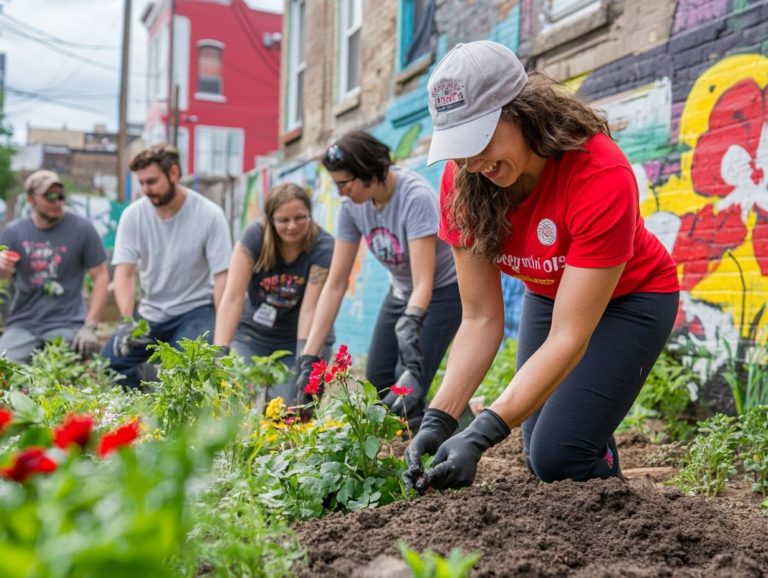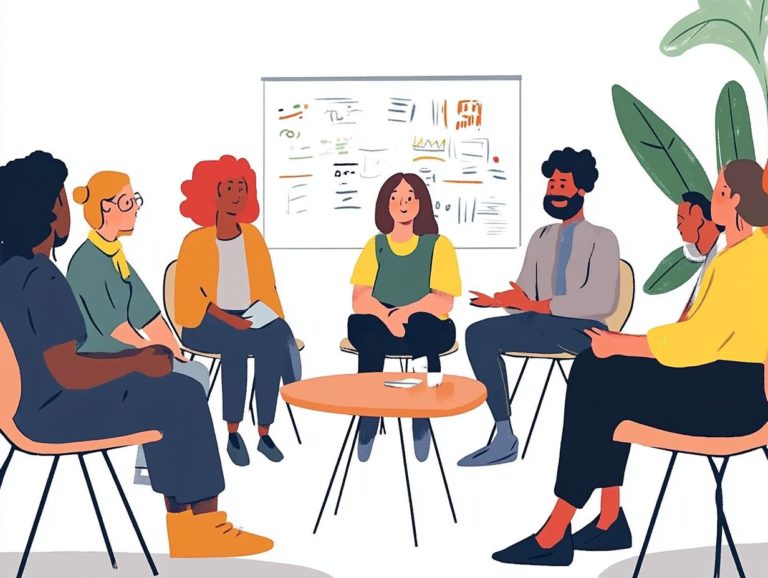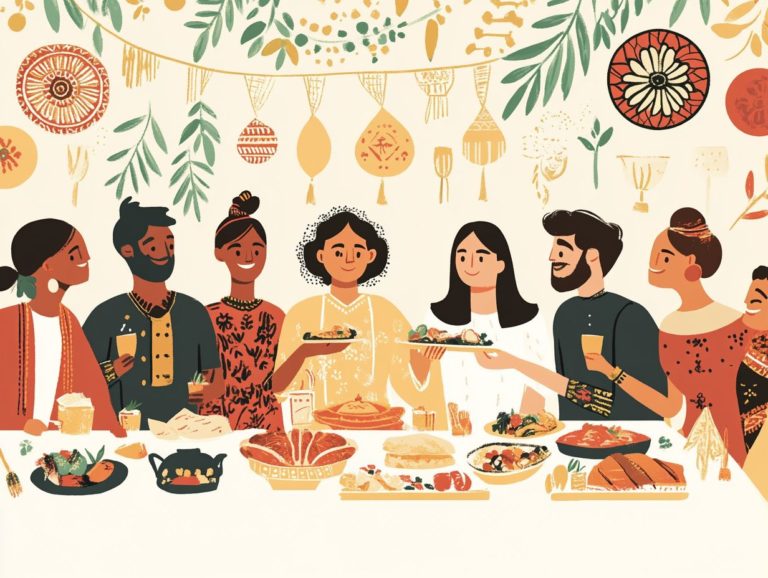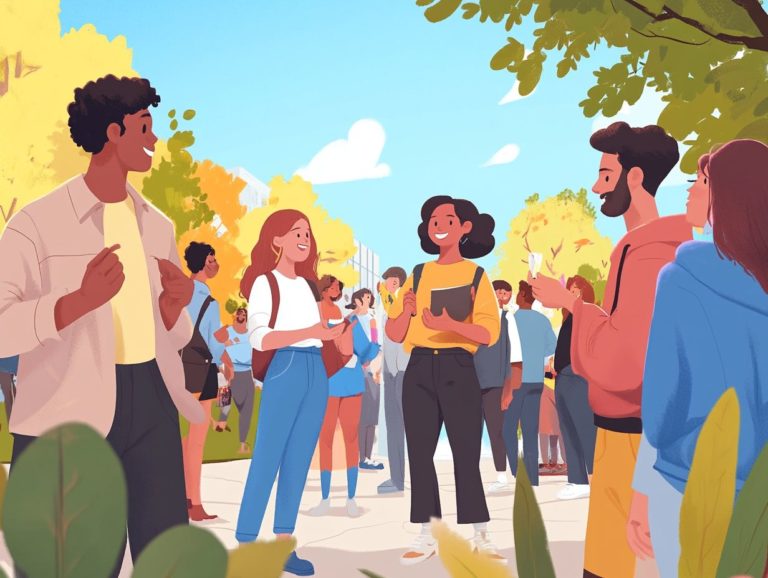5 Books on Cultural Adjustment for Students
Navigating a new culture can be an exhilarating yet daunting experience, particularly for students studying abroad.
This article delves into five insightful books that offer invaluable guidance on cultural adjustment. These resources will give you the knowledge and confidence to thrive.
Contents
- Key Takeaways:
- 1. The Art of Crossing Cultures: 10 Habits to Cultivate for Intercultural Success
- 2. The Culture Map: Breaking Through the Invisible Boundaries of Global Business
- 3. The Global Student: An Insider’s Guide to Studying Abroad
- 4. The Foreign Student’s Guide to Studying in the United States
- 5. The International Student’s Guide to American Colleges
- What Is Cultural Adjustment and Why Is It Important for Students?
- What Are the Stages of Cultural Adjustment?
- What Are Some Common Challenges Faced by International Students?
- How Can Reading Books on Cultural Adjustment Help Students?
- What Are Some Other Resources Available for Students Adjusting to a New Culture?
- How Can Universities Support Students in Their Cultural Adjustment Process?
- Frequently Asked Questions
- What are some recommended books for cultural adjustment for students?
- How can these books help with cultural adjustment for students?
- Are these books only for international students?
- Can these books be used for both short-term and long-term study abroad programs?
- Do these books focus on a specific country or region?
- Where can these books be purchased?
Key Takeaways:
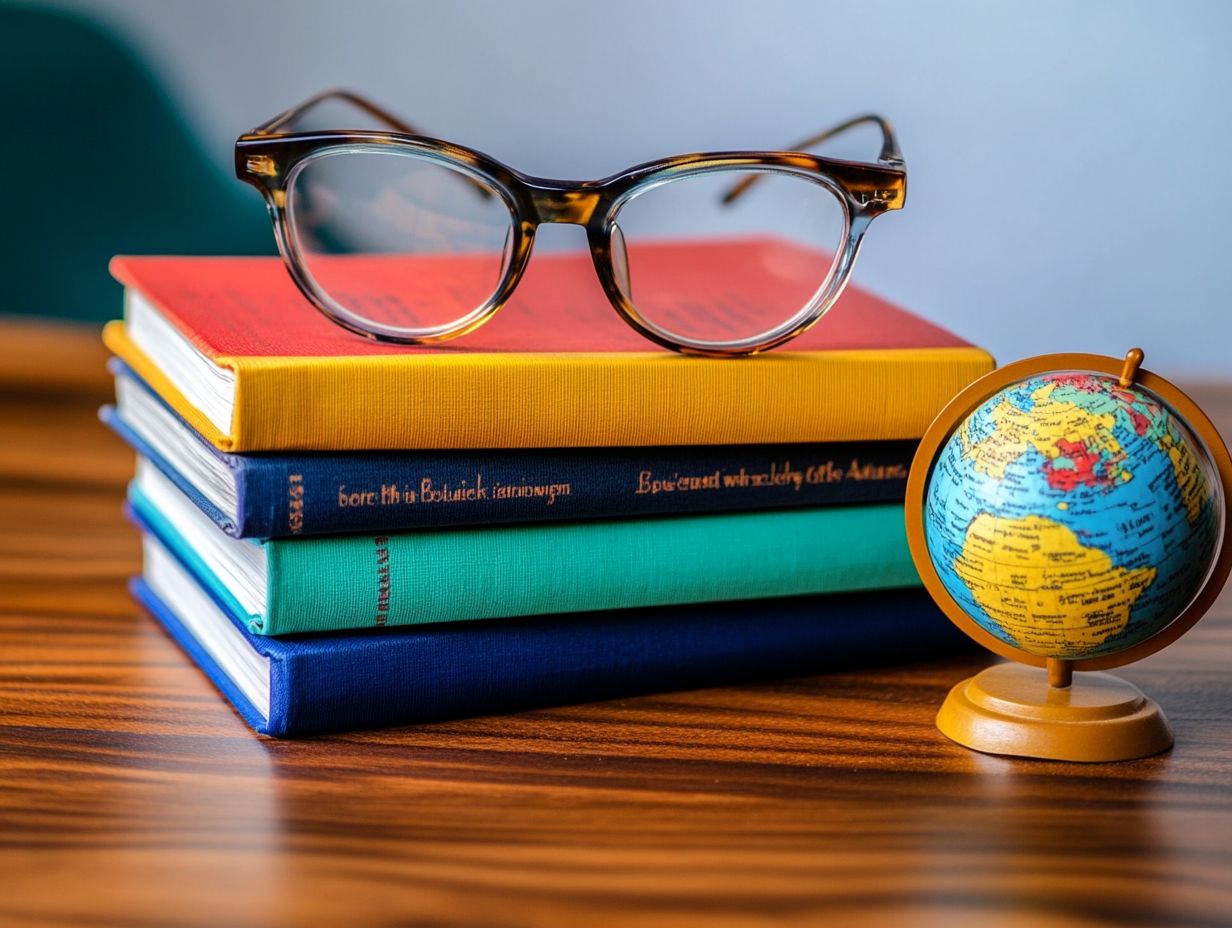
- Cultural adjustment is vital for students studying abroad. Reading books on this topic can help ease the process.
- Common challenges faced by international students include language barriers and homesickness.
- Universities can support students by providing resources and support systems.
1. The Art of Crossing Cultures: 10 Habits to Cultivate for Intercultural Success
Mastering the art of crossing cultures is essential in today s interconnected world. Understanding diverse cultures can lead to personal growth and enriched experiences.
By cultivating ten transformative habits, you can enhance your communication skills and foster connections within diverse communities. These habits enable you to empathize with immigrants and appreciate cultural differences.
For instance, embracing curiosity invites you to explore unfamiliar customs. Engaging with literature, such as the powerful narratives shared by Katherine Boo, enhances your empathy and understanding.
By incorporating these habits, you expand your worldview and develop meaningful relationships. Each interaction becomes an opportunity for learning and growth.
2. The Culture Map: Breaking Through the Invisible Boundaries of Global Business
In today’s world, where global business knows no borders, grasping cultural differences is essential for effective communication. This understanding strengthens relationships and elevates your decision-making processes.
By exploring “The Culture Map” by Erin Meyer, you master these complexities with confidence. You can craft strategies that are both inclusive and adaptive.
3. The Global Student: An Insider’s Guide to Studying Abroad
Studying abroad lets you immerse yourself in various cultures. It enhances academic pursuits and sharpens critical thinking skills.
As you engage with locals and delve into new traditions, you’ll gain firsthand insights. Authors like Jhumpa Lahiri intricately weave identity with cultural experiences in their works.
Similarly, Chimamanda Ngozi Adichie s narratives underscore the significance of diverse stories. These experiences lead to profound personal growth and a renewed appreciation for our interconnectedness.
Don’t wait dive into these books and empower your journey today!
4. The Foreign Student’s Guide to Studying in the United States
Navigating the academic landscape as a foreign student in the United States can be transformative. It profoundly impacts your identity and personal growth while presenting challenges.
Seek out orientation programs offered by universities. These programs provide insights into academic expectations and help you connect with fellow students.
In Kevin Kwan s novel, he highlights the unique hurdles of maintaining cultural heritage. Consider joining clubs or organizations that celebrate your culture for support.
Firoozeh Dumas uses humor to bridge cultural divides. Sharing your story can foster belonging and understanding.
Embrace mistakes as part of learning. This approach can turn challenges into enriching experiences.
5. The International Student’s Guide to American Colleges
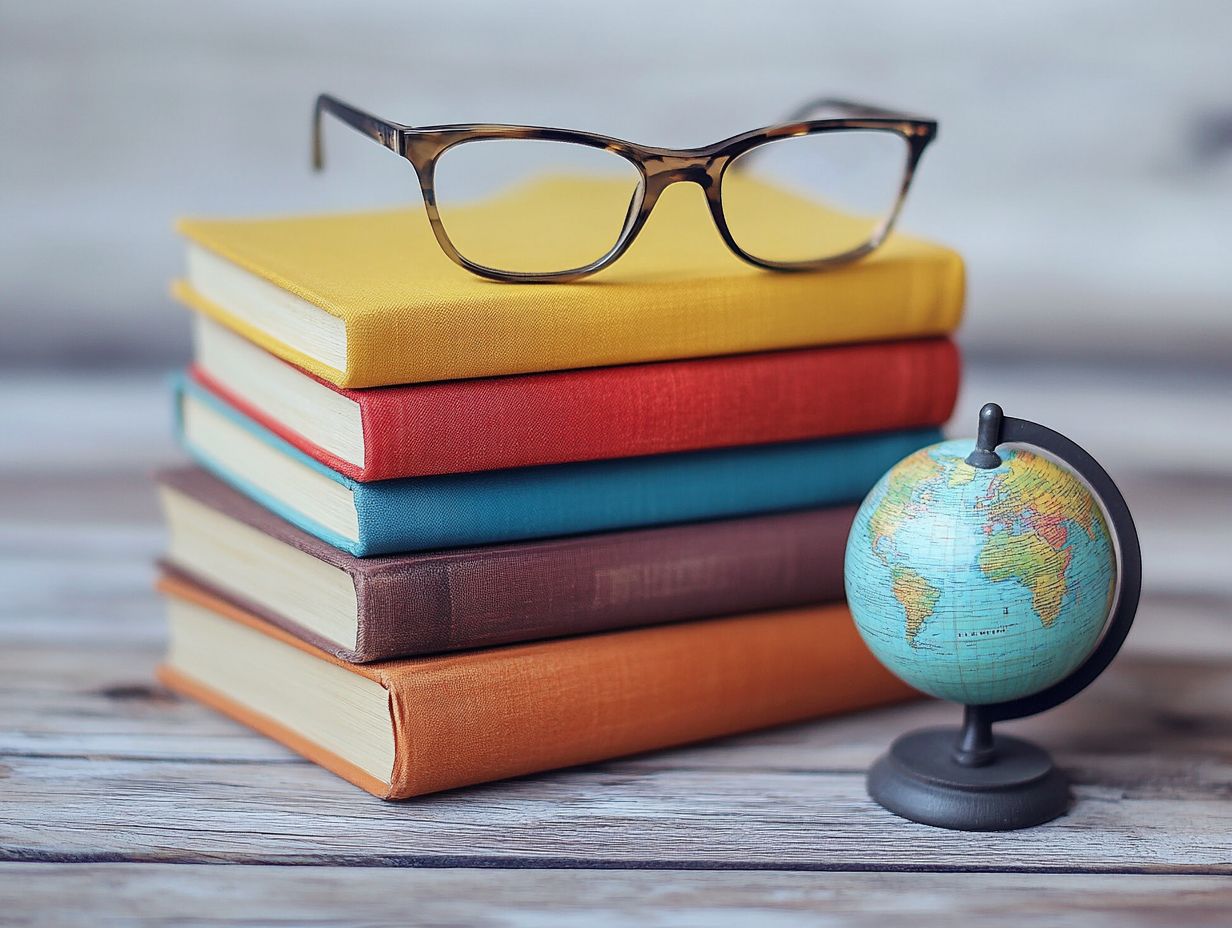
Choosing the right American college requires careful thought about academic programs, cultural fit, and financial aid.
Understand the details of each institution, like class sizes and support services. Research available scholarships to ease financial pressures.
In her narratives, Barbara Kingsolver emphasizes the importance of community. A strong community can help you feel at home in a new environment.
Getting involved in local events or student organizations enhances your sense of belonging. Helen Oyeyemi’s characters show how to navigate new settings.
These elements create a pathway to not just academic success but also personal growth.
What Is Cultural Adjustment and Why Is It Important for Students?
Cultural adjustment is the process of adapting to a new culture. It’s crucial for your well-being and can greatly influence your education and personal growth.
This journey starts with excitement and can lead to culture shock. You may feel overwhelmed by different communication styles and daily routines.
Feeling isolated during this transition is common. This reflects the emotional weight of homesickness.
Those who navigate cultural adjustment often gain deeper insights and resilience. Engaging with local communities can ease this transition.
Sharing stories and joining student organizations highlight the importance of support systems. They help you thrive in unfamiliar environments.
What Are the Stages of Cultural Adjustment?
The stages of cultural adjustment unfold as a series of emotional experiences, ranging from excitement and curiosity to frustration and eventual acceptance. This journey mirrors the narrative many students embark upon, often facing challenges of cultural adjustment along the way.
When you first immerse yourself in a new culture, you might find yourself in a honeymoon phase filled with awe and wonder. You could revel in trying local delicacies and participating in vibrant festivals, all while basking in a thrilling sense of adventure.
However, as the novelty begins to fade, you may encounter challenges like language barriers or cultural misunderstandings. This can lead to frustration similar to a student grappling with a classroom dynamic that feels worlds apart from their home environment.
As you gradually learn to navigate these complexities, the adjustment phase will kick in, marked by small victories that build your confidence. Ultimately, your journey concludes with acceptance, where you discover solace and belonging in the blend of your original and adopted cultures, enriched by a deeper understanding of diverse perspectives.
What Are Some Common Challenges Faced by International Students?
International students often encounter a wide range of challenges, including cultural differences, identity struggles, and communication barriers. These can complicate the adjustment process.
These hurdles not only affect academic performance but also make it harder to form meaningful social connections. For instance, navigating unfamiliar classroom dynamics can be daunting, as differing educational norms can lead to misunderstandings with instructors and peers.
Feelings of isolation may creep in when you struggle to grasp local nuances and humor, leaving you feeling disconnected.
Take, for example, a student from Asia who might miss the subtle intricacies of English humor. This could create a sense of exclusion during group discussions, further diminishing their ability to engage fully in both academic and extracurricular activities.
How Can Reading Books on Cultural Adjustment Help Students?
Reading books on cultural adjustment helps you gain valuable insights and narratives that deepen your understanding of the adjustment process. Additionally, exploring language learning books for study abroad students fosters personal growth and emotional resilience.
Take, for instance, narratives like *The Namesake* by Jhumpa Lahiri and *Americanah* by Chimamanda Ngozi Adichie. These works beautifully illustrate the complex experiences of individuals navigating new cultural landscapes. By immersing yourself in such stories, you can recognize your own struggles and triumphs amidst change. This cultivates a sense of connection and belonging.
Books can be your best friends, reflecting your own experiences and challenges. Engaging with these tales gives you perspective and encouragement, significantly enhancing your cultural adjustment process and enabling you to thrive in diverse environments.
What Are Some Other Resources Available for Students Adjusting to a New Culture?
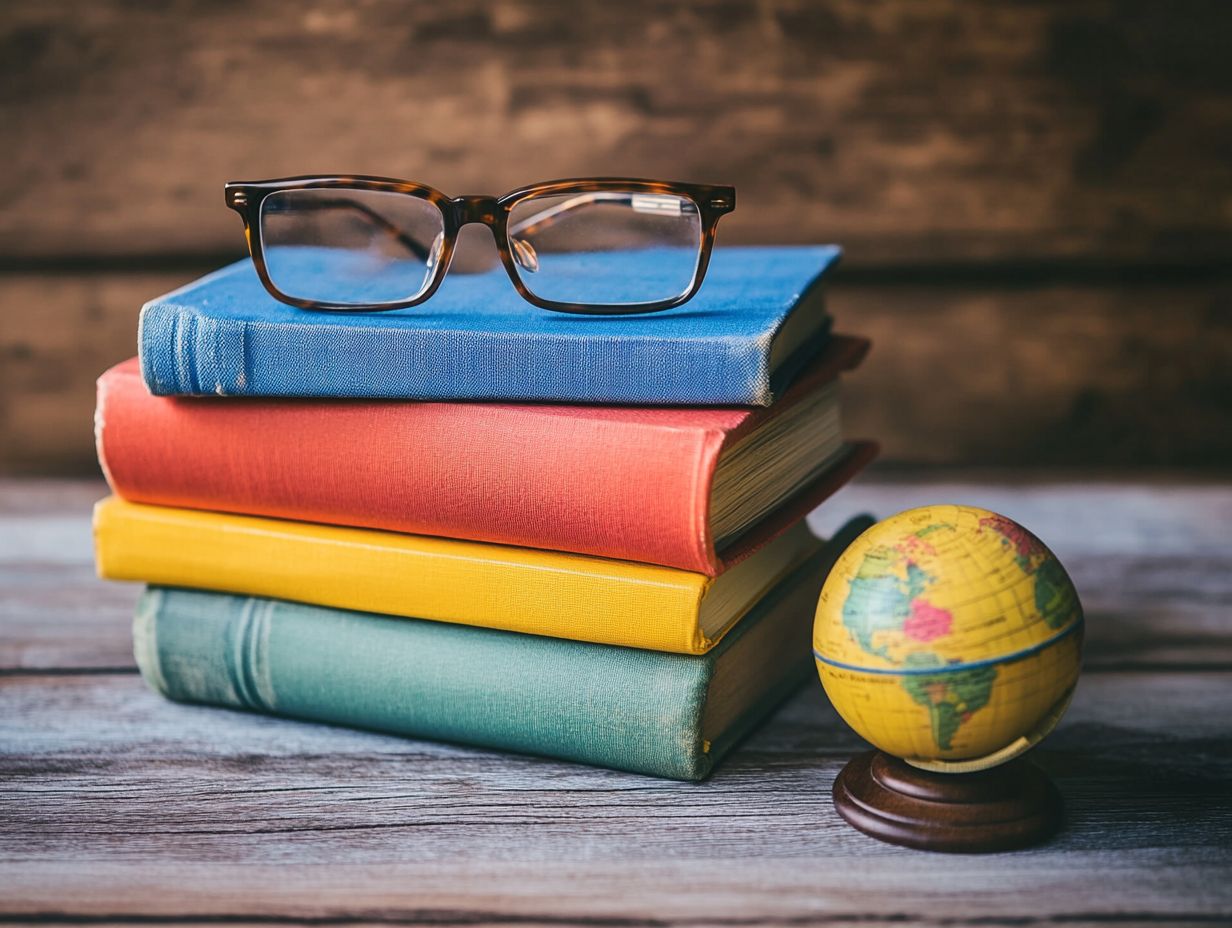
In addition to reading, various resources like community support groups, workshops, and mental wellness programs are essential in helping you adjust to a new culture.
These resources create vital support systems that guide you through the intricacies of cultural differences, language barriers, and emotional challenges. Community support groups provide a safe haven where you can share your experiences and forge connections with peers who are navigating similar obstacles.
Workshops often organized by universities focus on practical skills such as how to communicate effectively with people from different cultures and conflict resolution. These equip you with the tools you need to thrive in your new environment. Meanwhile, mental wellness programs emphasize the importance of mental health, offering tailored counseling services for those facing the unique stresses of cultural transition.
Together, these initiatives not only ease your journey of cultural integration but also foster a sense of belonging and community engagement. Don t wait to seek help finding resources can make all the difference!
How Can Universities Support Students in Their Cultural Adjustment Process?
Universities play a key role in supporting your cultural adjustment. They provide resources, foster community, and focus on emotional wellness.
Institutions can implement detailed welcome programs. These programs should cover academic expectations, cultural norms, and social integration.
Counseling services are essential for helping you navigate emotional challenges during transitions.
By offering platforms for cultural exchange initiatives, universities enrich your experience. You can learn from the diverse backgrounds of your peers.
Creating an inclusive environment ensures you feel valued. This cultivates a sense of belonging that enhances your university experience and academic success.
Frequently Asked Questions
What are some recommended books for cultural adjustment for students?
1. “The Global Student: An Insider’s Guide to Studying Abroad” by Stacie Nevadomski Berdan and Sir Cyril Taylor, offers insights on navigating cultural shock for international students.
2. “The International Student’s Survival Guide” by Gary Althen.
3. “Culture Smart! A Guide to Customs & Etiquette: USA” by Dee Murray and Kirstin Olsen.
4. “Cultural Intelligence: Surviving and Thriving in the Global Village” by David C. Thomas and Kerr Inkson.
5. “The Art of Crossing Cultures” by Craig Storti.
How can these books help with cultural adjustment for students?

These books are packed with helpful tips and insights that make cultural adjustment easier! They cover topics such as cultural differences, communication, social etiquette, and adapting to a new academic environment. Additionally, using 5 essential apps for cultural adjustment can further enhance your experience.
Are these books only for international students?
No, these books can help any student studying in a new cultural environment. They offer practical advice and strategies for understanding and adapting to a different culture, and you can also find inspiring stories of cultural adjustment success that highlight various experiences, regardless of nationality.
Can these books be used for both short-term and long-term study abroad programs?
Yes, these books are suitable for both short-term and long-term study abroad programs. They cover a wide range of topics relevant for students studying abroad for any length of time.
Do these books focus on a specific country or region?
Some of these books may focus on certain regions or countries, but they also offer general advice and principles applicable to any cultural setting. It is recommended to check the contents before purchasing to ensure they align with your specific needs.
Where can these books be purchased?
These books can be purchased online through major booksellers such as Amazon, Barnes & Noble, and Book Depository. They may also be available at your university’s bookstore or local libraries.
Don’t wait to dive into these books! They can make your transition smoother today.

